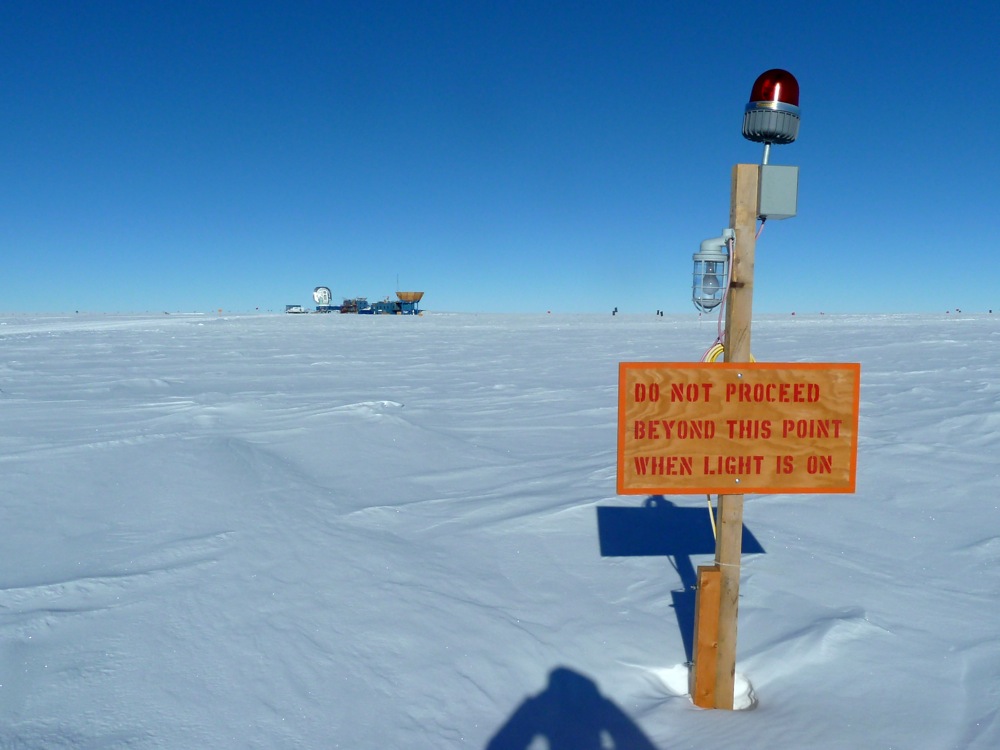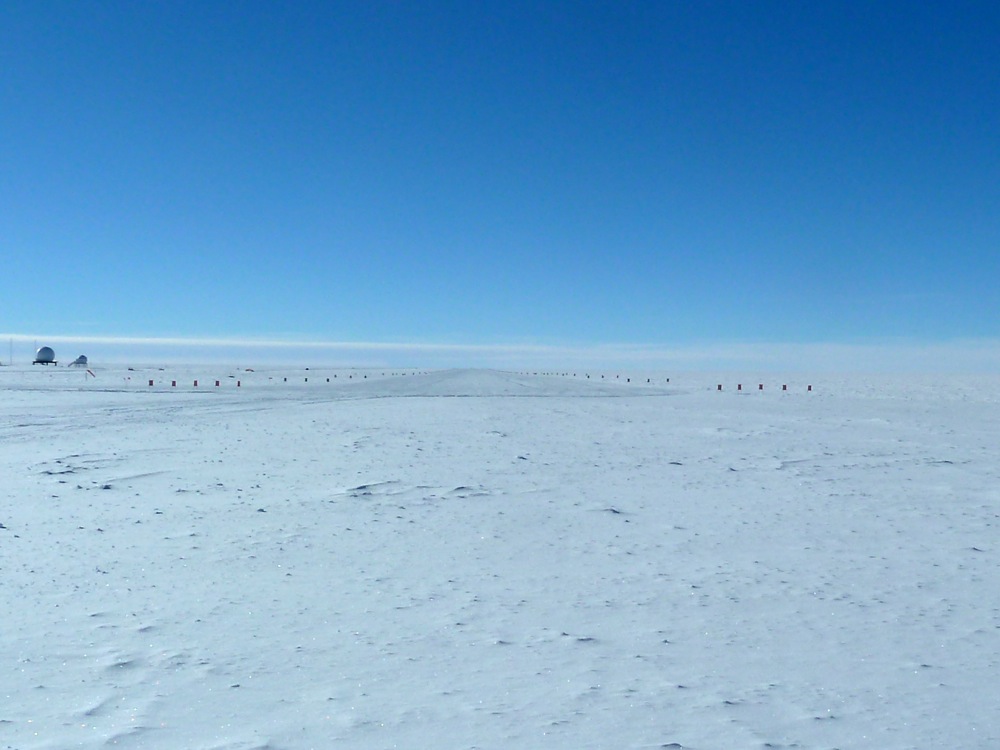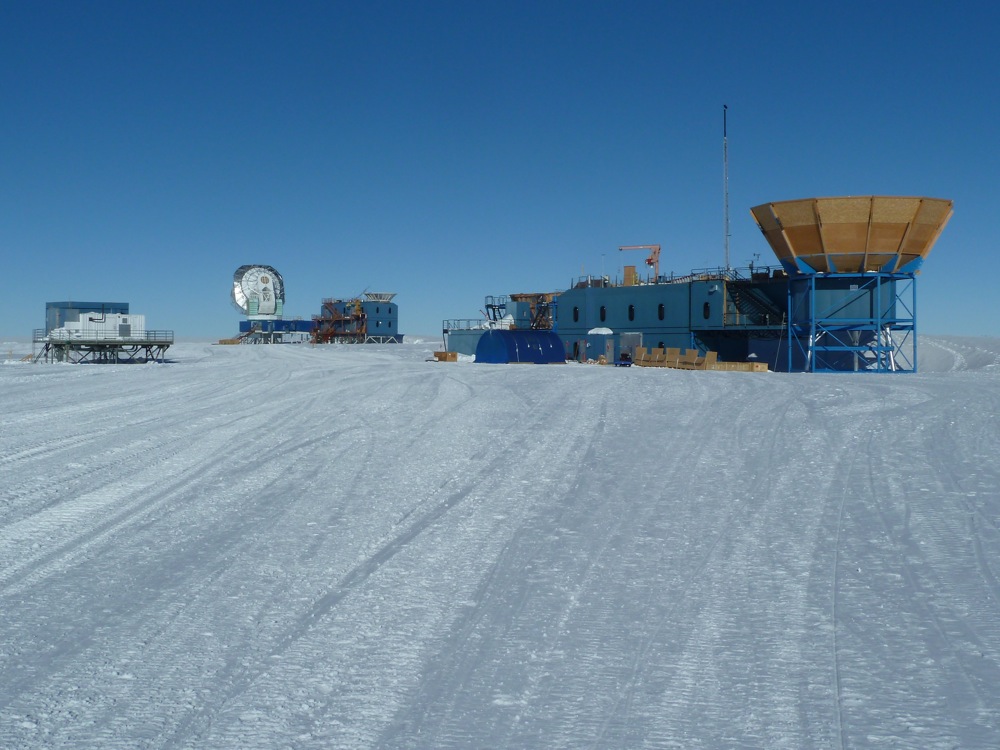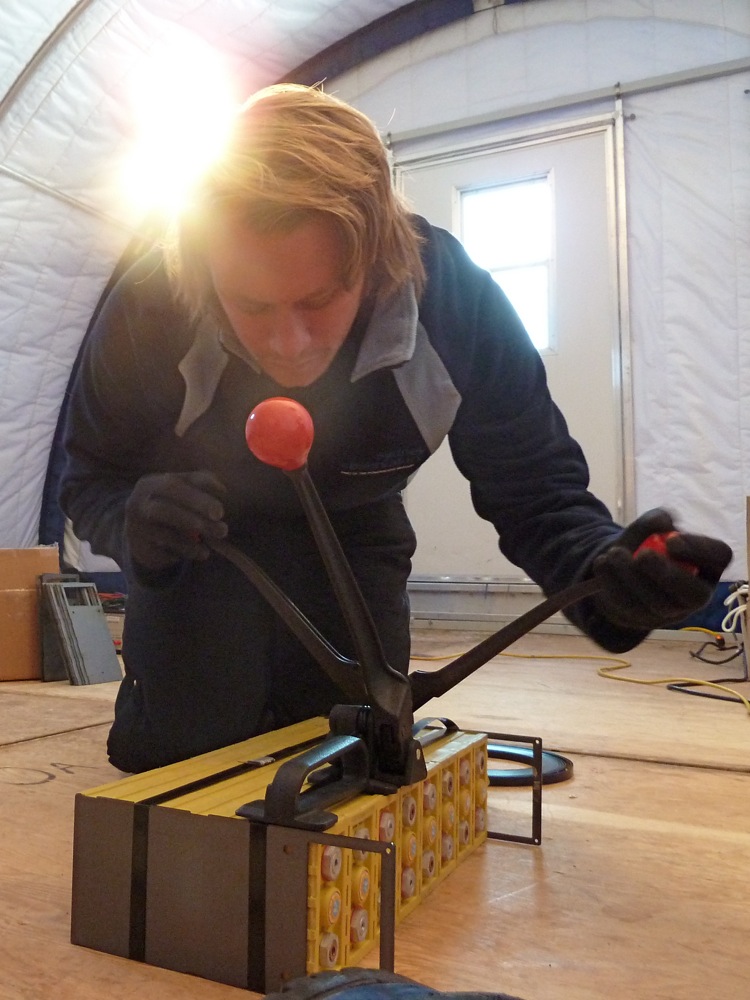| Geoff Sims @ UNSW | 
|
Navigation
Friday, 4th January, 2013
Getting through our tasks. (John)
While still in McMurdo we made up a fairly comprehensive list of things we need to do, both here and at Ridge A. The more planning we can do at low altitude, the better!
First though, here are a couple of photos of the "new" station which opened in 2006. When I was last here, in 2003, the old South Pole dome was still acting as the main station, with the new station just starting construction. It's a very imposing structure, consisting of two double-storey "pods". They are on stilts to minimize snow accumulation, and separated from each other by a fire door. In principle, one half of the station could burn down and we'd live in the other half. However, an architectural oversight has placed the galley in one pod and the bar in the other, so it's not clear how this would work in practice.


Leaving the station, we dress up in all that ECW gear we joked about in McMurdo, and walk about a kilometer to the MAPO Astrophysics building. (MAPO stands for the Martin A. Pomerantz Observatory). Pomerantz was a US scientist who pioneered the use of the South Pole for astronomy in the second half of last century. A wonderful talk he gave at the Astronomical Society of Australia conference in Hobart in the 1980s was one of the things that inspired me to become an "Antarctic astronomer".
The MAPO building is in the "Dark sector" of the station, an area that is reserved for astronomy and is thus kept radio-quiet and free from light pollution. Other sectors are the "Quiet sector", reserved for seismology and thus not welcoming of vehicles or folk trudging by in heavy boots; the "Clean Air sector", where daily samples are taken of the cleanest and least polluted air on earth (and from which vehicles are also banned); and the Antenna Field, where the HF antennas and satellite communications dishes are located. The Antenna field is also off-limits without authorization, as it is too easy to get fried there.
Heading out to the Dark Sector takes you across the skiway. As being hit by an LC130 is right up there in the "dumb ways to die" category, a warning beacon is installed to either side.


About a kilometer from the main station is the MAPO building. It's a pleasant walk in these conditions, and we do it several times a day.

One of our tasks is to "band" our new batteries into blocks of eight. Our PLATO observatory that we will be servicing at Ridge A uses 108 LiFePO4 batteries, weighing a total of about a quarter of a tonne. These batteries keep the system running when, for example, the sun is down and the diesel engines have got into one of their moods and are refusing to start.
These batteries are quite wonderful, but need to be restrained between two steel end plates to stop their sides from bulging. So, we're putting our new batteries together in blocks of eight, and putting tight steel bands around them with one of those tools they normally use on packing crates.


← Back to South Pole Diaries 2012/13
